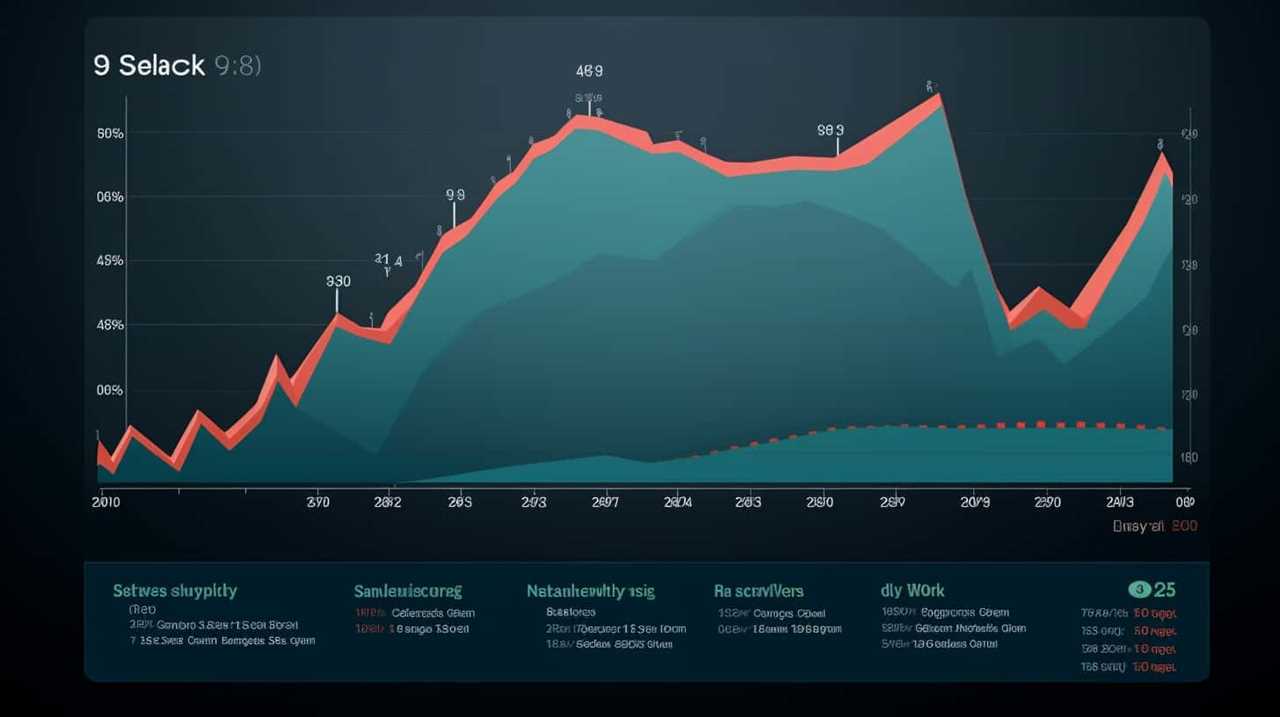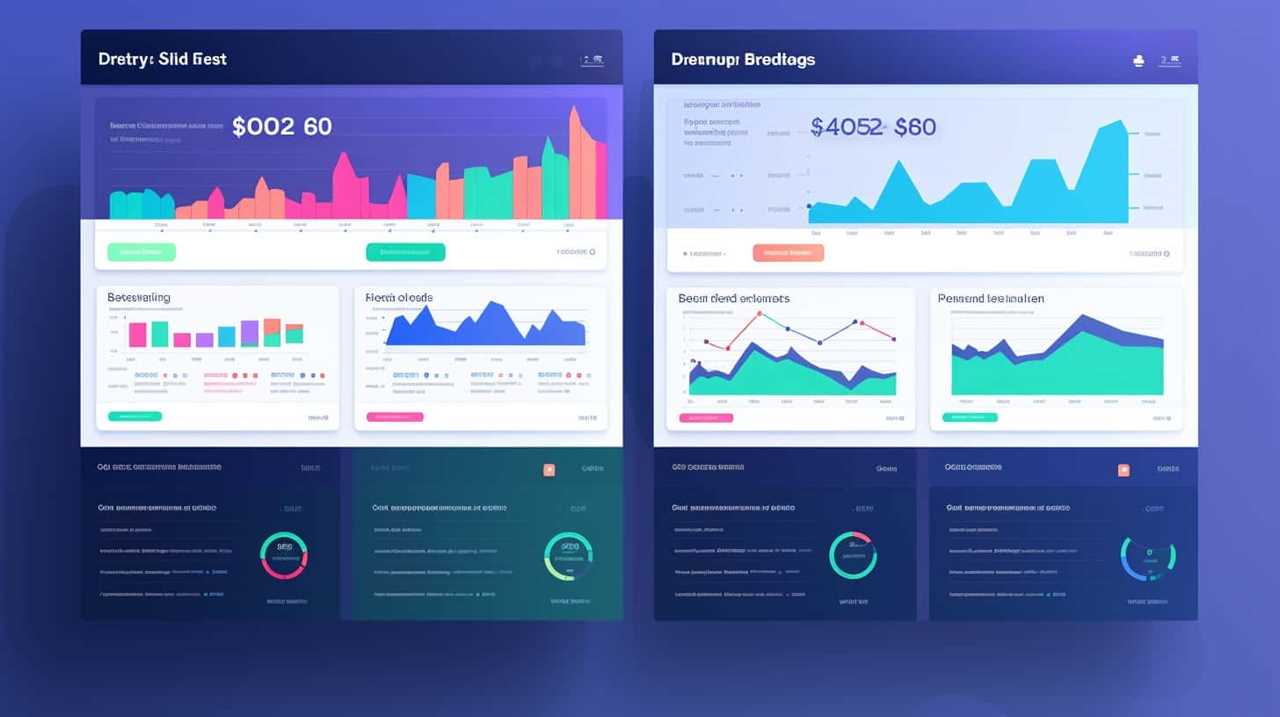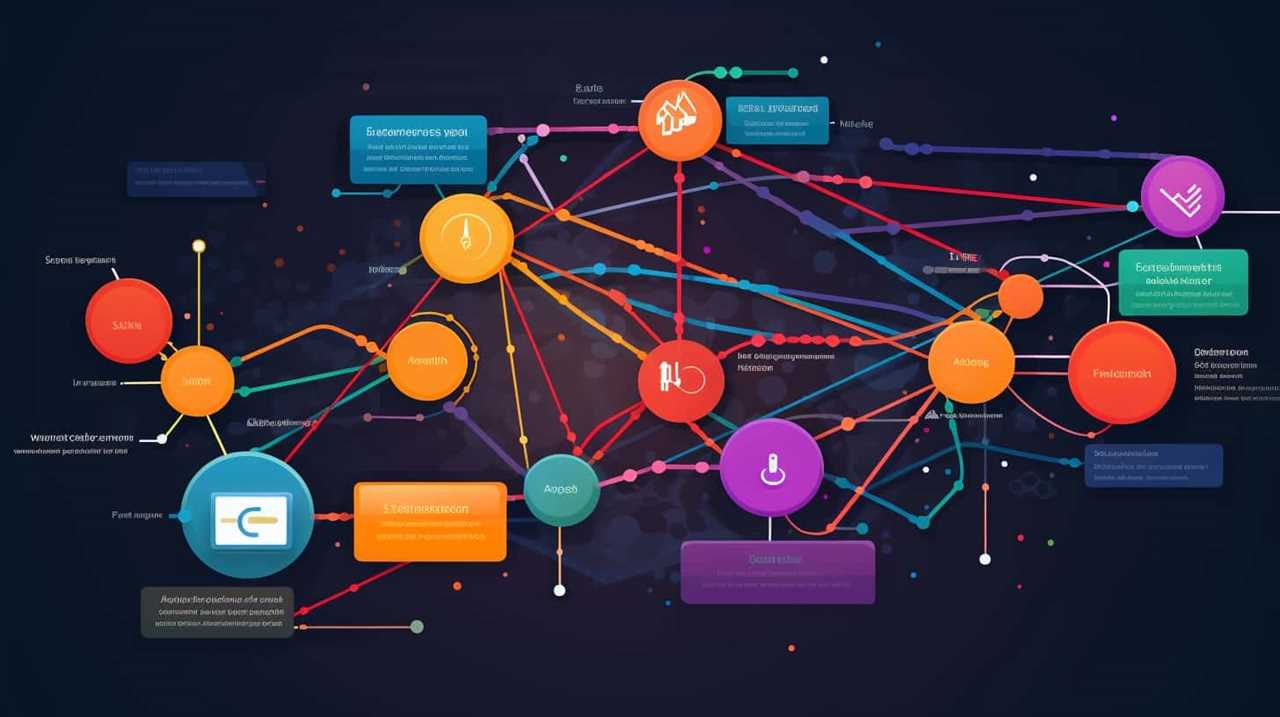We’ve cracked the code, folks! Get ready to reveal the enchanted formula for content that will establish you as a top expert in any domain.
This data-driven guide reveals the key steps to commanding topical authority with your content. From identifying your niche and conducting thorough research to leveraging social proof and building strong links, we’ve got you covered.
Master the art of crafting compelling headlines and promoting your content effectively. It’s time to elevate your content game and become the go-to expert in your field.
Key Takeaways
- Topical relevance is crucial for building audience trust and attracting an audience, so it’s important to align content with audience interests and needs.
- Thorough research and deep understanding of the subject matter help establish expertise and thought leadership in the field, giving a competitive advantage.
- Building credibility through consistently delivering high-quality content, providing valuable insights, and establishing authority are essential for commanding topical authority.
- Crafting compelling headlines, creating valuable and informative content, and optimizing it for search engines are key factors in creating content that commands topical authority.
Understanding Topical Authority
In this article, we’ll explore the concept of topical authority and its importance in creating content that establishes our expertise in a specific subject area. Understanding topical relevance and the importance of niche expertise is crucial for achieving this authority.

Topical relevance refers to the alignment between the content we create and the interests and needs of our target audience. It involves understanding the specific topics and keywords that are relevant to our niche and incorporating them strategically into our content.
By demonstrating expertise in a particular subject area, we can establish ourselves as trusted authorities and attract a dedicated audience. This expertise is built through a deep understanding of the intricacies and nuances of our niche. It involves staying up-to-date with the latest research and trends, continuously learning and improving our knowledge.
Ultimately, by focusing on understanding topical relevance and developing niche expertise, we can create content that not only resonates with our audience but also positions us as leaders in our field. This, in turn, enhances our credibility and influence, allowing us to command topical authority.
Identifying Your Niche
To identify our niche, we need to delve deeper into the specific subject area we’ve established topical authority in. Finding your niche is crucial for creating content that resonates with your target audience. Here are four key steps to help you identify your niche:

- Research your audience: Understand their needs, interests, and pain points. Conduct surveys, interviews, and analyze data to gain insights into their preferences.
- Analyze competitor gaps: Identify gaps in the market that your competitors aren’t addressing. Look for areas where you can provide unique value and differentiate yourself.
- Focus on your expertise: Determine your strengths and expertise within the subject area. Leverage your knowledge and skills to create content that showcases your authority.
- Test and refine: Experiment with different niches and content formats to see what resonates best with your audience. Continuously monitor and analyze the performance of your content to refine your niche.
Conducting Thorough Research
After identifying our niche, it is essential to delve into conducting thorough research to ensure we have a solid understanding of the subject area and can create content that resonates with our target audience. Thorough research and effective analysis are the foundation of any successful content strategy. By investing time in research, we can gather valuable insights, identify trends, and uncover data-driven information that will help us create content that truly stands out. To visualize the importance of research, consider the following table:
| Benefits of Thorough Research | Key Takeaways |
|---|---|
| 1. Deep Understanding | Gain in-depth knowledge of the subject matter |
| 2. Target Audience Insights | Identify the needs and preferences of your audience |
| 3. Competitive Edge | Stay ahead of the game by surpassing your competitors |
Establishing Your Expertise
When it comes to establishing our expertise, having niche knowledge gives us a clear advantage. By focusing on a specific area, we can become masters of our subject matter, which not only builds our credibility but also allows us to provide valuable insights and solutions.
This expertise is crucial in proving our thought leadership within the industry, positioning us as go-to sources for information and guidance.
Niche Knowledge Advantages
One key advantage of niche knowledge is that it allows us to confidently assert our expertise in a particular subject. Having niche expertise gives us a competitive advantage in the crowded online space, as it sets us apart from others who may have a more general understanding.

Here are four ways that niche knowledge can benefit us:
- Deep understanding: We can dive deep into a specific topic, gaining a comprehensive understanding that sets us apart from others who only have surface-level knowledge.
- Specialized insights: Our niche expertise allows us to provide unique insights and perspectives that others may not have considered.
- Targeted audience: By focusing on a specific niche, we can attract a more targeted audience who are specifically interested in our area of expertise.
- Authority building: Niche knowledge helps us establish ourselves as thought leaders and authorities in our field, which further enhances our credibility and reputation.
With niche expertise, we can confidently position ourselves as experts in our chosen subject matter, building credibility through our deep understanding and specialized insights.
Building Credibility Through Expertise
To establish our expertise, we leverage our niche knowledge to build credibility and authority in our chosen subject matter. Building trust and establishing authority are essential components of becoming a recognized expert in any field.
One way we accomplish this is by consistently delivering high-quality, data-driven content that resonates with our audience. We focus on providing valuable insights and actionable information that our readers can apply to their own mastery journey.

By demonstrating our expertise through well-researched and insightful articles, we build trust with our audience and establish ourselves as authorities in our niche. This trust allows us to engage with our readers on a deeper level, fostering a sense of community and loyalty.
As we continue to prove our industry thought leadership, we’ll explore strategies for taking our expertise to the next level.
Proving Industry Thought Leadership
In establishing our expertise and proving industry thought leadership, we actively engage with our audience through high-quality, data-driven content. Here are four ways we demonstrate our industry authority:
- Publishing insightful research: We conduct extensive research to provide our audience with valuable insights and data-driven analysis. By sharing our findings, we establish ourselves as thought leaders in the industry.
- Offering expert opinions: We regularly contribute our expertise to industry publications, podcasts, and webinars. By providing expert opinions on relevant topics, we showcase our knowledge and establish credibility in the field.
- Creating comprehensive guides: We develop detailed guides that cover various aspects of the industry. These guides serve as go-to resources for professionals seeking mastery in their field, further solidifying our thought leadership.
- Engaging in industry events and discussions: We actively participate in industry conferences, webinars, and online forums. By sharing our expertise and participating in discussions, we build relationships with industry peers and establish ourselves as go-to experts in the field.
Establishing industry authority and thought leadership comes with several benefits, including increased brand recognition, improved credibility, and enhanced opportunities for collaboration and partnership. By actively engaging with our audience through high-quality, data-driven content, we position ourselves as leaders in the industry.

Crafting a Compelling Headline
Crafting a compelling headline is an essential step in establishing topical authority for our content. To capture the attention of our audience and rank higher in search engine results, we must employ effective headline writing techniques.
A compelling headline should be concise, yet captivating, offering a glimpse of the valuable content to follow. Incorporating power words and numbers can enhance the impact of our headlines, while creating a sense of urgency or curiosity.
It’s important to optimize our headlines for SEO by including relevant keywords and ensuring they align with the content. By crafting compelling headlines, we can attract more readers, increase engagement, and ultimately establish ourselves as masters in our industry.
Creating Valuable and Informative Content
After establishing a compelling headline, we continue our journey towards commanding topical authority by creating valuable and informative content. To achieve this, we focus on content optimization and promotion. Here are four key strategies to help you create content that stands out:

- Conduct thorough research: Dive deep into the topic, gather relevant data, and provide insightful analysis to offer valuable information to your readers.
- Structure your content effectively: Use headings, subheadings, and bullet points to enhance readability and make it easier for readers to navigate through your content.
- Incorporate visuals: Visual content like images, infographics, and videos can effectively communicate complex ideas and make your content more engaging.
- Provide actionable takeaways: Offer practical tips, step-by-step guides, or case studies to provide your audience with actionable insights they can implement in their own lives or businesses.
By following these strategies, you can create content that not only educates and informs but also positions you as an authoritative source in your industry.
Don’t forget to promote your content through various channels to reach a wider audience and maximize its impact.
Incorporating Relevant Keywords Strategically
When it comes to incorporating relevant keywords strategically, there are several key points to keep in mind.
First, it’s important to understand keyword placement techniques, such as including them in your title, headings, and throughout the body of your content.

Additionally, increasing keyword density can help improve your search engine optimization efforts.
Lastly, optimizing your content for search engines by using relevant keywords in meta tags and alt tags can further boost your topical authority.
Keyword Placement Techniques
In the pursuit of commanding topical authority, we employ a strategic approach to incorporating relevant keywords through effective keyword placement techniques. By understanding keyword optimization and utilizing SEO techniques, we can optimize our content to rank higher in search engine results and attract our target audience.
Here are four key keyword placement techniques that can help us achieve this goal:

- Title Tags: Including relevant keywords in the title tags of our web pages can significantly boost their visibility and click-through rate.
- Headers and Subheaders: Incorporating keywords in headers and subheaders not only improves the readability of our content but also signals the topic relevance to search engines.
- Body Text: Sprinkling relevant keywords naturally throughout the body text helps search engines understand the context of our content and its relevance to specific queries.
- Meta Descriptions: Crafting compelling meta descriptions that include keywords can entice users to click on our content when it appears in search results.
Increasing Keyword Density
To enhance our content’s visibility and attract organic traffic, we strategically incorporate relevant keywords by increasing keyword density through strategic placement techniques. Keyword optimization plays a crucial role in improving a website’s search engine rankings. By strategically placing relevant keywords throughout our content, we can increase its relevance and improve its chances of appearing higher in search engine results pages.
Increasing keyword density involves incorporating keywords in a way that feels natural and organic to the reader. It’s essential to avoid keyword stuffing, as this can negatively impact the user experience and even lead to penalties from search engines. Instead, we aim to strike a balance between incorporating keywords and maintaining the overall quality and readability of our content.
Optimizing for Search Engines
To optimize our content for search engines and strategically incorporate relevant keywords, we utilize a method known as strategic keyword integration. This technique allows us to enhance our content’s visibility and increase its chances of ranking higher in search engine results. Here are four key elements of our approach:
- Keyword research: We conduct thorough research to identify the most relevant and high-performing keywords in our industry. This helps us understand what our target audience is searching for and enables us to optimize our content accordingly.
- On-page optimization: We strategically place our chosen keywords in crucial on-page elements such as titles, headings, meta descriptions, and URL structures. This signals to search engines what our content is about and helps them understand its relevance.
- Content creation: We create high-quality, informative, and engaging content that satisfies the search intent of our target audience. By incorporating our keywords naturally within the content, we ensure that it remains valuable and relevant.
- Monitoring and refining: We continuously monitor the performance of our content using SEO techniques and tools. This allows us to track keyword rankings, identify areas for improvement, and make necessary refinements to boost our content optimization efforts.
Optimizing Your Content for Search Engines
Our approach to optimizing content for search engines involves utilizing various strategies to enhance visibility and improve organic rankings.

Keyword research is a vital component of this process. By conducting thorough research, we can identify the terms and phrases that users are searching for, allowing us to create content that aligns with their needs and interests. This not only helps us target the right audience but also increases the chances of our content appearing in relevant search results.
Additionally, on-page optimization plays a crucial role in improving search engine rankings. By optimizing elements such as title tags, meta descriptions, and headers, we can provide search engines with clear signals about the content of our pages, making it easier for them to understand and rank our content appropriately.
Utilizing Data and Statistics to Support Your Claims
By incorporating data and statistics, we strengthen our claims and establish credibility in our content. Using data analysis and proving statistical significance allows us to provide evidence-based support for our arguments.
Here are four ways in which we can utilize data and statistics effectively:

- Conduct thorough research and gather relevant data from reputable sources.
- Use charts, graphs, and infographics to visually present the data and make it more engaging for the audience.
- Compare and contrast different data sets to identify patterns and trends.
- Provide clear and concise explanations of the statistical analysis methods used to ensure transparency and accuracy.
Incorporating Visual Elements to Enhance Engagement
When it comes to creating content that commands topical authority, incorporating visual elements is key. Visuals not only enhance the user experience, but they also grab attention and increase engagement.
According to studies, content with relevant images gets 94% more views than those without. By including captivating visuals, you can effectively communicate your message and increase click-through rates, making your content more appealing and shareable.
Importance of Visuals
We frequently incorporate visual elements to enhance engagement in our content. Visuals play a crucial role in capturing our audience’s attention, conveying complex information, and evoking emotions.
Here are four reasons why visuals are important in content creation:

- Visual storytelling: Visuals have the power to tell stories in a captivating and memorable way. By using images, videos, and infographics, we can create narratives that resonate with our audience and leave a lasting impact.
- Increased engagement: Incorporating visual content marketing strategies such as eye-catching images and videos can significantly boost engagement levels. Research shows that visuals can increase information retention by up to 65% and improve social media engagement by 150%.
- Improved comprehension: Visuals make it easier for our audience to understand complex concepts. By visually representing data or using diagrams and charts, we can simplify information and enhance comprehension.
- Enhanced brand recognition: Consistent use of visual elements, such as logos, colors, and typography, helps in building brand recognition. Visuals create a visual identity that helps our audience identify and remember our brand more easily.
Enhancing User Experience
Incorporating visual elements into our content enhances user engagement and improves the overall user experience.
But it’s not just about making things look pretty; visuals play a crucial role in improving accessibility and optimizing loading speeds.
When it comes to accessibility, visual elements can provide alternative ways for users to consume information, making content more inclusive for people with disabilities.
Additionally, optimizing loading speeds is essential for user experience, as slow-loading pages can lead to high bounce rates and decreased engagement.

Increasing Click-Through Rates
To further enhance engagement and increase click-through rates, we can strategically incorporate visual elements into our content. Visual elements have the power to capture attention and convey information quickly and effectively.
Here are four ways we can optimize our content with visuals:
- Eye-catching images: Including high-quality, relevant images can instantly grab the reader’s attention and entice them to click.
- Infographics: Infographics are a visually appealing way to present complex information in a digestible format, making it easier for readers to understand and engage with our content.
- Videos: Incorporating videos can significantly increase click-through rates, as they offer a dynamic and interactive experience for users.
- Captivating headlines and optimized meta descriptions: By using compelling headlines and meta descriptions, we can entice readers to click on our content when it appears in search results.
Leveraging Social Proof to Boost Credibility
One effective way to boost credibility is by leveraging social proof.
Social proof refers to the influence that the actions and opinions of others have on our own behavior. By showcasing testimonials from satisfied customers or clients, you can provide social validation and enhance your credibility.

Testimonials serve as evidence that your product or service has been positively received by others, which can help build trust with potential customers. Additionally, testimonials can help address any doubts or objections that prospects may have, as they can see that others have had a positive experience with your offering.
When leveraging testimonials, it’s important to choose ones that are relevant, specific, and highlight the benefits of your product or service.
Building Strong Internal and External Links
When it comes to SEO success, linking plays a crucial role.
Internal links help search engines navigate your website and establish the hierarchy of your content, while external links signal to search engines the credibility and relevance of your content.

To build strong internal links, consider incorporating keyword-rich anchor texts and strategically linking to high-authority pages within your site.
For external links, focus on building relationships with reputable websites in your industry and aim for natural, contextual links that add value to your content.
Linking for SEO Success
Building strong internal and external links is crucial for SEO success. Links not only help search engines understand the relevance and authority of your content, but they also drive traffic to your website.
To ensure that your links are effective, consider the following techniques and strategies:

- Conduct a thorough analysis of your website’s current link profile to identify areas for improvement.
- Use relevant anchor text when linking internally to provide context to search engines.
- Build relationships with authoritative websites and try to secure external links from them.
- Regularly measure the effectiveness of your links through metrics such as referral traffic, domain authority, and organic search rankings.
Internal Vs. External Links
To continue our discussion on linking for SEO success, let’s explore the distinction between internal and external links and their importance in building strong connections.
Internal links are the links that connect different pages within your website, while external links are the links that connect your website to other websites. Both types of links play a crucial role in SEO and should be used strategically.
Internal linking techniques involve linking relevant pages within your website, which helps search engines understand the structure and hierarchy of your content. It also helps users navigate through your website and discover related information.
External linking benefits your website by establishing credibility and authority. When you link to reputable and relevant external sources, it signals to search engines that your content is trustworthy and valuable. It also encourages other websites to link back to you, further enhancing your SEO efforts.

Link Building Strategies
One important aspect of our content strategy is implementing effective link building strategies to establish strong internal and external connections. Link building techniques play a crucial role in improving a website’s authority and visibility.
Here are some effective outreach strategies we employ to build strong links:
- Guest posting: We collaborate with authoritative websites in our niche to contribute high-quality content and include relevant links back to our site.
- Broken link building: We identify broken links on reputable websites and reach out to suggest our relevant content as a replacement, benefiting both parties.
- Social media promotion: We actively share our content on social media platforms, encouraging others to link back to our site.
- Internal linking: We strategically interlink our own content to enhance user experience, improve site navigation, and distribute link equity.
Promoting Your Content Effectively
We have found that a strategic promotion plan is essential to maximizing the reach and impact of our content. In order to effectively promote our content, we employ a variety of strategies and utilize different distribution channels.
One of our key promoting strategies is to leverage the power of social media. We create engaging and shareable content that resonates with our audience, and then we promote it through our social media channels. This allows us to reach a wider audience and drive more traffic to our website.

Another effective promoting strategy is to collaborate with influencers and thought leaders in our industry. By partnering with these individuals, we’re able to tap into their existing audience and gain exposure to a larger pool of potential readers.
Additionally, we make use of content syndication platforms and guest posting opportunities to expand our reach even further. These platforms and opportunities allow us to distribute our content to a wider network of websites and publications, increasing our visibility and credibility.
By implementing these promoting strategies and utilizing various distribution channels, we’re able to maximize the reach and impact of our content. This strategic approach ensures that our content is seen by the right people at the right time, driving engagement and establishing our authority in the industry.
To consistently update and improve our content, we follow a data-driven approach.

Consistently Updating and Improving Your Content
In order to maintain our topical authority, it’s crucial that we consistently update and improve our content. By implementing a strategic updating strategy and focusing on content improvement, we can ensure that our content remains relevant and valuable to our audience.
Here are four key steps to consider:
- Conduct regular content audits to identify outdated or underperforming content.
- Optimize existing content by incorporating relevant keywords and updating it with fresh information.
- Add new content to cover emerging topics or address gaps in our existing content library.
- Encourage user engagement and feedback to understand what our audience wants and needs, and use that feedback to improve our content.
Frequently Asked Questions
How Can I Effectively Promote My Content to Reach a Wider Audience?
To effectively promote our content and reach a wider audience, we utilize influencer partnerships and content syndication. These strategies allow us to tap into new networks and leverage the influence of others to increase visibility and engagement.
What Are Some Strategies to Consistently Update and Improve My Content Over Time?
To consistently update and improve our content over time, we employ various content refresh strategies and content optimization techniques. By staying data-driven and SEO-focused, we ensure our audience receives the mastery they desire.

How Can I Identify My Niche and Target Audience Effectively?
To effectively identify our niche and target audience, we analyze data on profitable niches and conduct thorough market research. By understanding our audience’s needs and preferences, we can create content that resonates and establishes our authority in the industry.
What Are the Best Practices for Incorporating Relevant Keywords Strategically Into My Content?
To strategically incorporate relevant keywords into our content, we focus on thorough keyword research and on-page optimization. By following these best practices, we ensure our content is data-driven, engaging, SEO-focused, and tailored to our audience’s desire for mastery.
How Can I Leverage Social Proof to Boost the Credibility of My Content?
To boost our content’s credibility, we leverage social proof through testimonials and case studies. This not only grabs attention but also provides a data-driven and engaging approach that appeals to an audience seeking mastery and SEO-focused content.
Conclusion
In conclusion, by following the secret formula for content that commands topical authority, you can establish yourself as an expert in your niche and boost your credibility.

Through thorough research, crafting compelling headlines, leveraging social proof, and building strong links, you can create content that not only engages readers but also ranks well in search engine results.
Remember, content promotion and continuous improvement are crucial for maintaining your authority.
So, grab the reins and ride the wave of topical authority to success!










